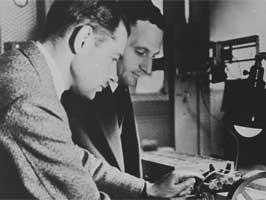 Erich Ernst Zepler was born in Germany in 1898, and moved to England in 1935, anglicising his name to Eric Ernest Zepler. Before writing about his life and work I want to quote four crucial words that he spoke in 1925, when he was being interviewed for an appointment at Telefunken in Berlin by Wilhelm Runge, the new Head of the Radio Receiver Laboratory.
Erich Ernst Zepler was born in Germany in 1898, and moved to England in 1935, anglicising his name to Eric Ernest Zepler. Before writing about his life and work I want to quote four crucial words that he spoke in 1925, when he was being interviewed for an appointment at Telefunken in Berlin by Wilhelm Runge, the new Head of the Radio Receiver Laboratory.
Runge described a high frequency problem in a new receiver that was being designed. Previously such problems had been solved largely by trial and error. Erich Zepler said “that can be calculated” and showed how he would do it. He got the job.
Those two men, with Ernst Klotz, had led a revolution in receiver design between 1925 and 1932, which had included the development of the Telefunken T9W receiver. The School of Electronics and Computer Science has one of those receivers, in working order.
From being a black art of trial and error, radio design was becoming an engineering discipline where the performance of new equipment could be determined before it was constructed. As electronic engineers we can take that situation for granted today, because of the achievements of engineers like Runge, Zepler and Klotz.
Eric Zepler was not only a great pioneering radio designer. In England he became a great teacher. After the experience of being his students or his colleagues many of us have dealt with engineering design problems by saying to ourselves, consciously or subconsciously, “that can be calculated”.